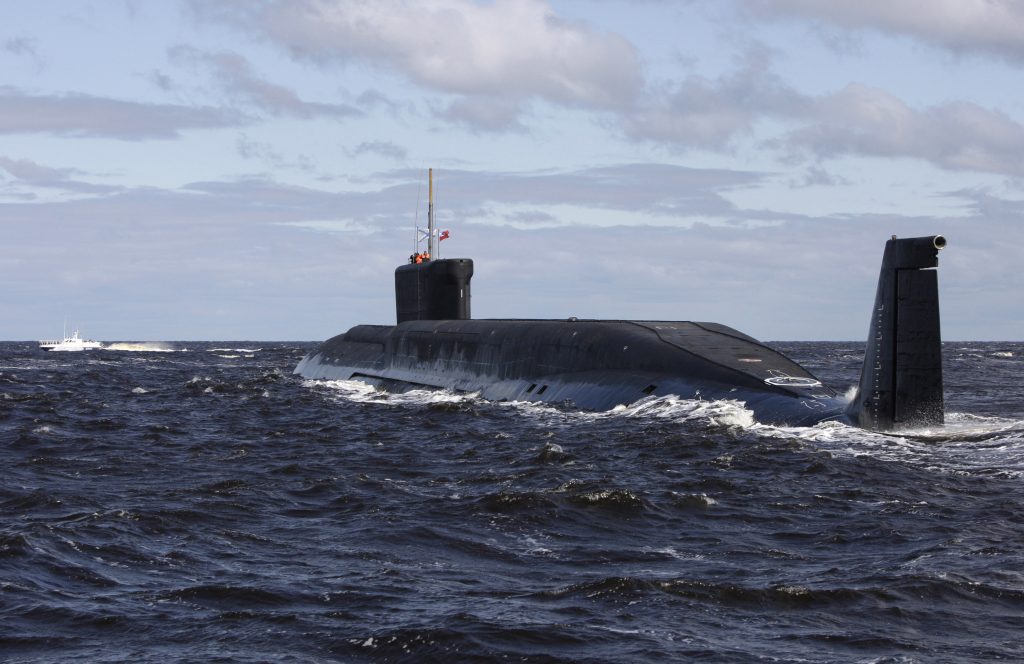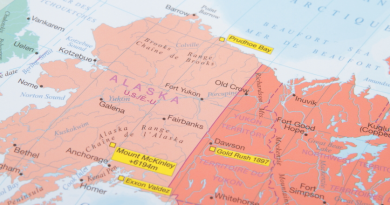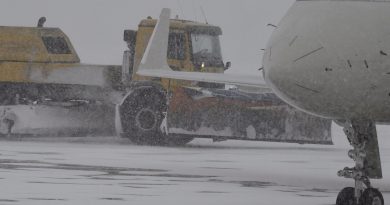Russian sub test-fires largest volley of nuclear missiles since Cold War

Never before have four Bulava missiles been launched from a single Borei-class submarine at the same time.
The nuclear-powered submarine “Yury Dolgoruky” launched four Bulava missiles from the White Sea, in Northwestern Russia. All four dummy-warheads reached their designated targets at the Kura test range on Kamchatka, the press service of the Northern Fleet informs on Tuesday evening according to military TV channel Zvezda.
The test launching is the most powerful weapons tests from a single submarine since the Cold War times.
Russia’s Defense Ministry has released a promo-video showing the launch of all four missiles (in Russian):
Not the first time
In September 2016, the same submarine launched two Bulava missiles, also then from submerged position in the White Sea, as reported by Barents Observer.
With today’s wargame, more than 30 Bulava missiles have been tested since 2004. Bulava will be the future cornerstone in the naval leg of Russia’s nuclear triad, and is the most expensive weapons project in the country. The missile, named SS-N-32 by NATO, has three stages with a projected range around 8,000 kilometers and can carry up to six individual targeted nuclear warheads.
The Russian navy operates three Borei-class submarines carrying Bulava missiles, one sailing with the Northern Fleet and two based with the Pacific Fleet. Another five of the class are under construction at the Sevmash yard in Severodvinsk.
Small compared to 1991 test
“Behemoth” was an exercise the Soviet Union conducted in 1991. It was viewed as a possible scenario of a nuclear war against the United States and was executed to confirm the possibility and safety of a quick underwater salvo.
On August 6, 1991, the Delta-IV submarine “Novomoskovsk” performed a full salvo underwater launch, launching all 16 SS-N-23 missiles on board. The whole salvo took 3 minutes and 44 seconds, with a 14 second interval between launches. During this time the submarine expelled more than 650 tons of weight. The 1st and the 16th missiles hit their targets at Kura testing range on the Kamchatka peninsula, while the rest were self-destructed in flight, according to Wikipedia.
Related stories from around the North:
Canada: NATO wants to keep the Arctic an area of low tensions, Radio Canada International
Finland: Finland, Sweden and US building three-way defence ties, YLE News
Norway: U.S. leads anti-submarine drill in Norwegian Sea, The Independent Barents Observer
Russia: Russia’s Northern Fleet drills submarine hunt in Barents Sea, The Independent Barents Observer
Sweden: Sweden issues first brochure on war and crisis preparedness since Cold War, Radio Sweden
United States: American fighter jets intercept Russian bombers outside Alaska, Alaska Public Media



